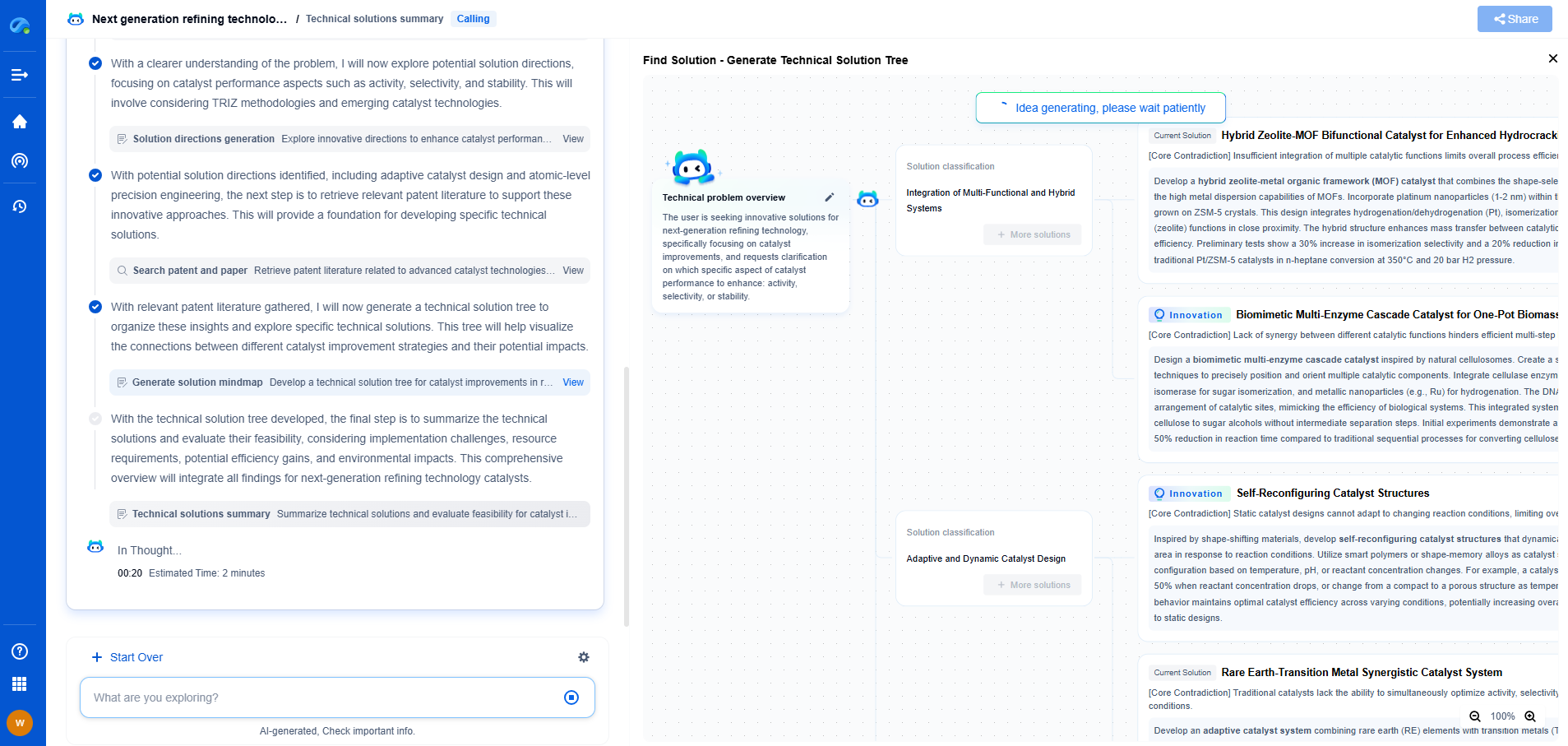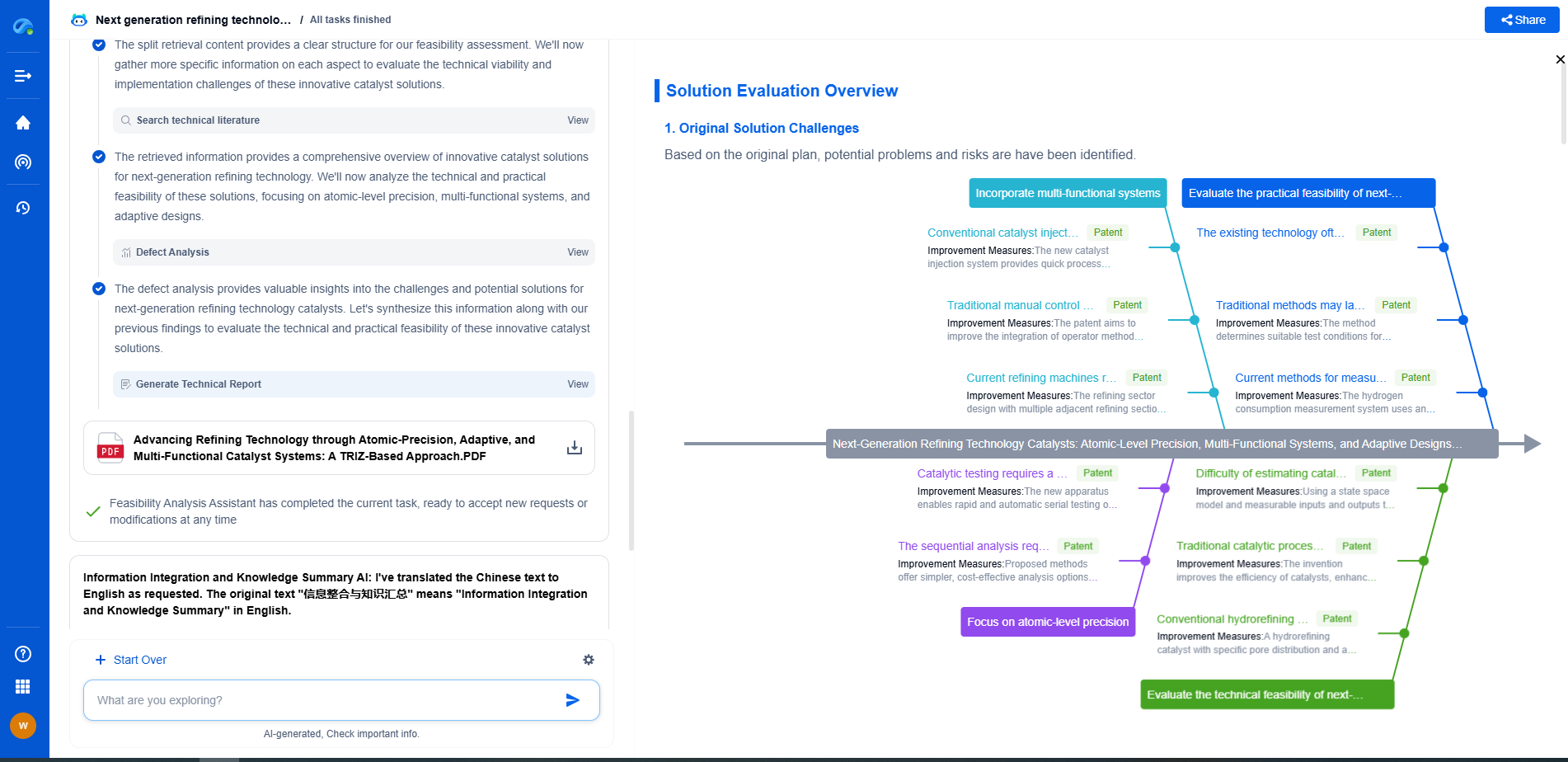What is real-time drilling optimization?
JUN 20, 2025 |
Understanding Real-Time Drilling Optimization
Real-time drilling optimization is a transformative practice that integrates various technologies, including advanced sensors, data analytics, and machine learning, to monitor drilling operations as they happen. This integration allows companies to make informed decisions quickly, minimizing risks and maximizing performance. At its core, real-time drilling optimization aims to address the dynamic nature of drilling by providing accurate, up-to-date information that guides operational adjustments when necessary.
Key Components of Real-Time Drilling Optimization
Several critical components are essential for successful real-time drilling optimization:
1. **Data Acquisition and Monitoring**: The process begins with the acquisition of real-time data from the drilling site. Sensors placed on drilling equipment collect a variety of data types, including pressure, temperature, and vibration levels. This data is then transmitted to a central monitoring system where it can be analyzed.
2. **Data Analytics and Interpretation**: Once the data is collected, it must be processed and interpreted. Advanced analytics tools and algorithms play a crucial role in this stage, identifying patterns and trends that might indicate potential issues or opportunities for optimization. This analysis helps in predicting future scenarios and making proactive adjustments.
3. **Decision-Making and Implementation**: The insights gained from data analysis need to be translated into actionable decisions. Drilling teams can make real-time adjustments to parameters such as drilling speed, mud weight, and drill bit pressure, ensuring that the operation remains efficient and productive.
Benefits of Real-Time Drilling Optimization
Implementing real-time drilling optimization can lead to numerous benefits, which contribute significantly to the overall success of drilling projects:
1. **Increased Efficiency and Productivity**: By enabling immediate adjustments based on real-time data, drilling operations can be optimized for maximum efficiency. This leads to faster drilling times and reduced downtime, ultimately increasing productivity.
2. **Enhanced Safety**: Real-time monitoring allows for the early detection of potential hazards, such as equipment malfunctions or unstable geological formations. By identifying these issues promptly, operators can take preventative measures, ensuring the safety of personnel and equipment.
3. **Cost Savings**: Optimized drilling operations result in significant cost savings. By reducing non-productive time and minimizing the risk of costly accidents or equipment damage, companies can achieve substantial cost efficiencies.
4. **Improved Decision-Making**: Access to real-time data and analytics empowers drilling teams to make better-informed decisions. This leads to more strategic planning and execution, enhancing the overall effectiveness of drilling operations.
Challenges in Implementing Real-Time Drilling Optimization
Despite its numerous advantages, implementing real-time drilling optimization is not without challenges:
1. **Data Management**: The sheer volume of data generated during drilling operations can be overwhelming. Effective data management systems are necessary to ensure that relevant information is accurately collected, stored, and analyzed.
2. **Integration with Existing Systems**: Integrating real-time optimization technologies with existing drilling infrastructure can be complex. Ensuring compatibility and interoperability between different systems is crucial for seamless operation.
3. **Skill Development**: Implementing and utilizing real-time drilling optimization requires specialized skills and knowledge. Training personnel to interpret data and make informed decisions is essential for the successful adoption of these technologies.
The Future of Real-Time Drilling Optimization
As technology continues to evolve, the future of real-time drilling optimization looks promising. Innovations in artificial intelligence and machine learning are expected to further enhance the accuracy and efficiency of data analysis, allowing for even more precise decision-making. Additionally, advances in sensor technology and communication systems will improve the reliability and scope of real-time data acquisition.
In conclusion, real-time drilling optimization represents a significant advancement in the oil and gas industry. By leveraging technology to provide immediate insights and facilitate proactive decision-making, companies can achieve greater efficiency, safety, and cost-effectiveness in their drilling operations. As the industry continues to embrace digital transformation, real-time drilling optimization will undoubtedly play a crucial role in shaping the future of drilling practices.
Navigating the Complexities of Drilling Innovation? Let AI Do the Heavy Lifting
In an industry where subsurface conditions, materials science, and drilling dynamics evolve rapidly, staying ahead of technical innovation and protecting your intellectual property can be overwhelming.
Patsnap Eureka, our cutting-edge AI assistant, is built for R&D and IP professionals in high-tech industries like drilling technologies. Whether you're optimizing rotary steerable systems, evaluating high-temperature materials, or exploring next-gen automation in directional drilling, Eureka enables real-time analysis of the latest patents, technology landscapes, and competitive movements—all from one intelligent, intuitive platform.
Ready to accelerate your development cycle and make strategic decisions with confidence? Explore Patsnap Eureka today—where smart drilling starts with smarter insights.
- R&D
- Intellectual Property
- Life Sciences
- Materials
- Tech Scout
- Unparalleled Data Quality
- Higher Quality Content
- 60% Fewer Hallucinations
Browse by: Latest US Patents, China's latest patents, Technical Efficacy Thesaurus, Application Domain, Technology Topic, Popular Technical Reports.
© 2025 PatSnap. All rights reserved.Legal|Privacy policy|Modern Slavery Act Transparency Statement|Sitemap|About US| Contact US: help@patsnap.com

